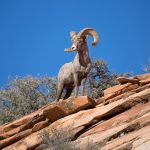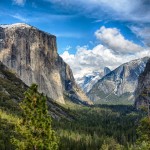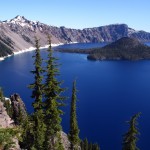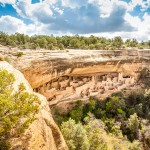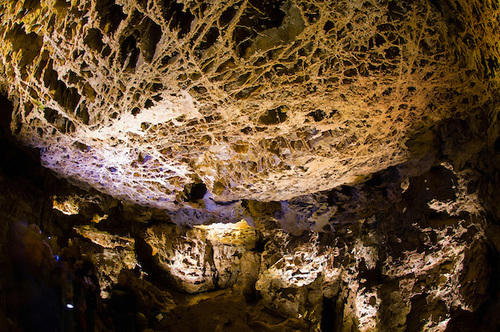What is a Wildlife Biologist?
A wildlife biologist is an expert in animals. They study wildlife, their habitats, and how they interact with each other. While wildlife biologists do study plants, they mostly focus on working with and learning about wild animals. Some also look at the ecosystem as a whole and see how people impact it.
A wildlife biologist works to preserve wildlife. This is done in a variety of ways, including protecting their habitats, trying to increase the population of endangered species, and working to resolve issues between man and animal. Wildlife biologists may often focus on one particular species or on the species of a particular area. They often have to deal with fairly complex issues such as trying to determine why a species is going extent. On the other hand, they also have to deal with species that are rapidly increasing in population, which can be just as bad.
Wildlife Biologist Job Description- Major Duties
The above definition of a wildlife biologist is fairly broad. It may give an overall idea of what these specialists do in a general sense, but how exactly does a wildlife biologist work to preserve wildlife on a daily basis? Here are some specific tasks a wildlife biologist may perform:
- Research Wildlife Populations – Wildlife biologists may need to estimate how many of a certain species lives within a particular area. To do this, they will need to research the species, its mating habits, and more. They may also catch, tag, draw blood from, and release wildlife.
- Set Catch Limits – Wildlife biologists, using the population of a species and its reproduction rate, work with park rangers and others to set catch limits and determine the beginning and ending of hunting season.
- Work with Game Populations – Additionally, wildlife biologists may also work to improve the abundance of hunted wildlife in an area, especially if there are a large number of hunters in that area.
- Conduct Research and Create Reports – A wildlife biologist may need to research and write reports about the wildlife population and how it is changing or being affected by something. They may publish these reports, present them at conferences, or discuss them with government personnel.
- Work to Improve Animal Habitats – When a species is in danger of having its habitat destroyed or has to deal with a changed habitat, wildlife biologists will work with ecologists and other professionals to develop a plan to improve the habitat and prevent the species from dying out or leaving the area.
- Develop Plans to Protect Endangered Species – On a larger scale, when a species has greatly decreased in population around the world, wildlife biologists will begin working on a plan to protect that species from extinction. This includes plans to breed more of the species, protect its natural habitats, and have laws passed that protect the species.
- Evaluate the Impact of Immigrant Wildlife – If a different species of wildlife begins to immigrate into an area, a wildlife biologist will study that species and determine how it will affect the species and habitat. They may also do such studies in regards to how humans will impact a new habitat.
- Help Develop Environmental Policy – Local wildlife biologists may work with conservation officers, ecologists, and local government to create policies and new laws regarding wildlife preservation.
- Educational Programs – Wildlife biologists may also put together programs to help educate others on nature and wildlife. These duties may also include doing public relations and working directly with the public. Some wildlife biologists may teach at universities.
Where Do Wildlife Biologists Work?
Wildlife biologists may work in labs or other indoor environments, or they may work outdoors. Those who work inside do research, write reports, analyze data, and prepare statements and plans for wildlife conservation. They may also attend meetings with different personnel in order to pass along information and provide advice for new policies or procedures. Occasionally, a wildlife biologist may need to work alone in a fairly isolated area, such as when studying animals on a remote island.
Those who work outdoors will often work directly with animals. This means that they may be attacked by animals if they aren’t careful. Even those who aren’t working directly with animals may be attacked if they accidentally disturb the wildlife.
Most wildlife biologists work for a state or federal agency. While a good number of these professionals are needed, the field is still very competitive. Some private organizations and companies hire wildlife biologists to help determine things like how a company’s manufacturing will impact an area, but these types of positions are more often filled by ecologists.
Work Conditions
Those who do indoor work may spend many hours in front of a computer or doing laboratory work such as running tests in the blood taken from animals. Wildlife biologists who work outdoors, on the other hand, may have to do so during snow, rain, or extreme heat. However, most do not work when it’s raining or during other dangerous weather conditions.
Many wildlife biologists work on teams with other researchers, scientists, technicians, and environmentalists. They may work alone when doing some research or when going outdoors to collect samples. Generally, their projects require input from other professionals, so wildlife biologists will interact with others on a regular basis, although they usually do not interact with the general public unless they’re in charge of an educational program.
Education Requirements for Wildlife Biologists
A wildlife biologist position requires a bachelor of science degree in wildlife biology, zoology, or wildlife ecology. Because this job market is highly competitive, many who want to become wildlife biologists will go from their undergraduate degree directly into a master of science program. This is especially true for those who want to advance as a wildlife biologist—most of the supervisory positions or upper level postings require a doctorate. Those who want to teach wildlife biology or conduct more detailed, independent research will also need a Ph.D.
Wildlife biologists may specialize in certain species of animals, such as herpetologists (reptile experts) or entomologists (insect specialists). Often, they will select their specialty while still working through their undergraduate program and take courses specifically related to those types of animals. Some decide to specialize later and take various continuing education courses to learn more about the species they’ve chosen to focus on.
Courses many wildlife biologists will want to take include ecology, zoology, botany, and chemistry.
Optional Certifications and Training
There are two different certifications a wildlife biologist may decide to pursue, although neither is typically a requirement for employment. These voluntary certifications are offered by the Wildlife Society. The first requires taking 36 hours of coursework from the society in areas of wildlife science, habitats, and biology. Those who complete these courses will receive an Associate Wildlife Biologist certificate. The second is the Certified Wildlife Biologist certification. It is given to those who have completed the Associate Wildlife Biologist certification and have gained a specific amount of field experience.
Once hired, a wildlife biologist may be given some training regarding the specific projects they will be working on. However, there are usually no formal training courses to complete. Because they need to keep up with changes and new information in the field, most wildlife biologists take continuing education courses, read peer review journals, and attend annual conferences.
Organizations in Support of Wildlife
The Wildlife Society is one of the main professional organizations that supports wildlife biologists. Its goals are to educate, train, and help wildlife professionals in a number of different ways. They offer a website with online articles and tools, offer educational courses, and more. There are a number of other organizations that wildlife biologists may join, including the American Society of Mammalogists, the Ecological Society of America, the Society for Marine Mammalogy, and the Wildlife Conservation Society.







